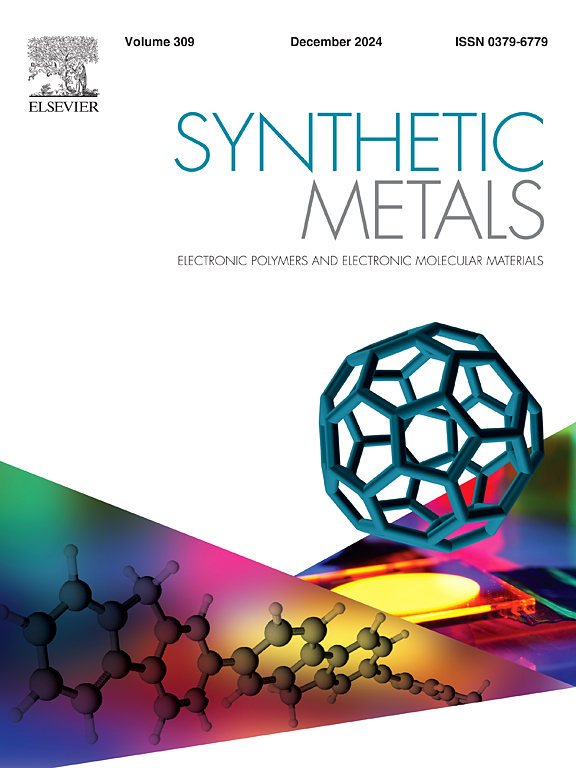A highly stretchable, stable and sensitive PEDOT:PSS-P(HEMA-co-AA) hydrogel for strain sensors
IF 4
3区 材料科学
Q2 MATERIALS SCIENCE, MULTIDISCIPLINARY
引用次数: 0
Abstract
As a crucial component of flexible electronic devices, poly(3,4-ethylenedioxythiophene):poly(styrenesulfonate) (PEDOT:PSS)-based hydrogels for strain sensors have garnered extensive attention for their potential in the field of wearable sensors due to their inherent conductivity and flexibility. However, challenges such as poor mechanical strength, limited sensitivity, and poor durability have hindered the widespread application of PEDOT:PSS hydrogels in high-performance strain sensors. In this study, we develop a novel PEDOT:PSS-P(HEMA-co-AA) hydrogel that addresses common limitations in hydrogel applications, demonstrating remarkable stretchability, low hysteresis, and reliable conductivity. The hydrogel is synthesized using a semi-interpenetrating polymer network (SIPN) strategy, combining the linear conducting polymer PEDOT:PSS with a chemically cross-linked network based on 2-hydroxyethyl methacrylate (HEMA) and acrylic acid (AA). This hybrid structure notably contributes to the hydrogel's mechanical properties, achieving a stretchability of 195 %, while maintaining a rapid response time of 0.20 seconds and exceptional cyclic stability over 1000 cycles under 100 % strain. Moreover, the hydrogel demonstrates promising strain-sensing capabilities, positioning it as a strong candidate for future applications in wearable electronics and flexible sensors. The adoption of the SIPN strategy, along with the synergistic combination of PEDOT:PSS and P(HEMA-co-AA), paves a new pathway for enhancing the mechanical performance and sensing properties of hydrogels in strain-sensing technologies.
求助全文
约1分钟内获得全文
求助全文
来源期刊

Synthetic Metals
工程技术-材料科学:综合
CiteScore
8.30
自引率
4.50%
发文量
189
审稿时长
33 days
期刊介绍:
This journal is an international medium for the rapid publication of original research papers, short communications and subject reviews dealing with research on and applications of electronic polymers and electronic molecular materials including novel carbon architectures. These functional materials have the properties of metals, semiconductors or magnets and are distinguishable from elemental and alloy/binary metals, semiconductors and magnets.
文献相关原料
公司名称
产品信息
阿拉丁
Ammonium persulfate
阿拉丁
N,N'-Methylenebisacrylamide
阿拉丁
Acrylic acid
阿拉丁
2-Hydroxyethyl methacrylate
 求助内容:
求助内容: 应助结果提醒方式:
应助结果提醒方式:


